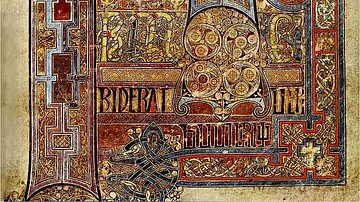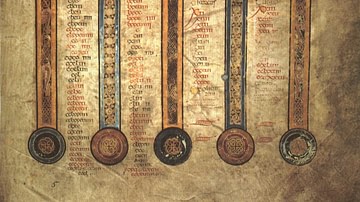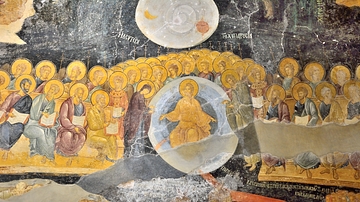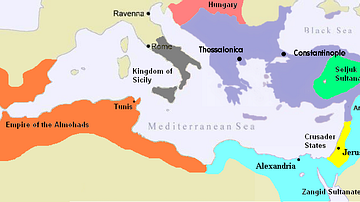Search Images
Browse Content (p. 1169)

Image
Book of Kells, Folio 292r
The Book of Kells, (folio 292r), c. 800 CE, showing the lavishly decorated text that opens the Gospel of John. (Trinity College Library)

Image
Book of Kells, Folio 5
Folio 5 of the Book of Kells with the Eusebian Canons.
Trinity College Library

Image
Book of Kells, Folio 27
Folio 27 of the Book of Kells with the four evangelists.
Trinity College Library

Image
The Book of Kells
Facsimile of the Book of Kells on public display at Hackley Public Library.

Image
Anastasis Scene in Chora Museum
Anastasis Scene, Chora Museum, Period: Late Byzantine; circa: 14th century CE, Istanbul, Turkey. Anastasis meaning ‘’standing up again’’ in Greek, Anastasis is one of the finest examples of frescoes in the world. It is located in the semi-dome...

Image
Deesis Scene in Chora Museum
Deesis Scene in Chora Museum, Period: Late Byzantine; circa: 14th century CE. Istanbul, Turkey. Seated in the center of a multi-layered mandorla, Christ is surrounded by Mary, John the Baptist, 12 disciples, martyrs prophets. Mary and John...

Image
Hyperpyron Coin of Manuel I Komnenos
A gold hyperpyron coin of Byzantine emperor Manuel I Komnenos (r. 1143-1180 CE). On the obverse is Christ while the emperor is shown on the reverse holding a cross. (Classical Numismatic Group, Inc. http://www.cngcoins.com)

Image
Byzantine Empire c. 1180 CE
A map illustrating the Mediterranean in the 12th century and, in purple, the Byzantine Empire c. 1180 CE, during the reign of Manuel I Komnenos.

Image
Manuel I Komnenos
An illustration from a 12th century CE manuscript depicting Byzantine emperor Manuel I Komnenos (r. 1143-1180 CE). (Vatican Library)

Image
Carved Viking Head
A detail of the chariot from the Oseberg burial.
Viking Ship Museum, Oslo